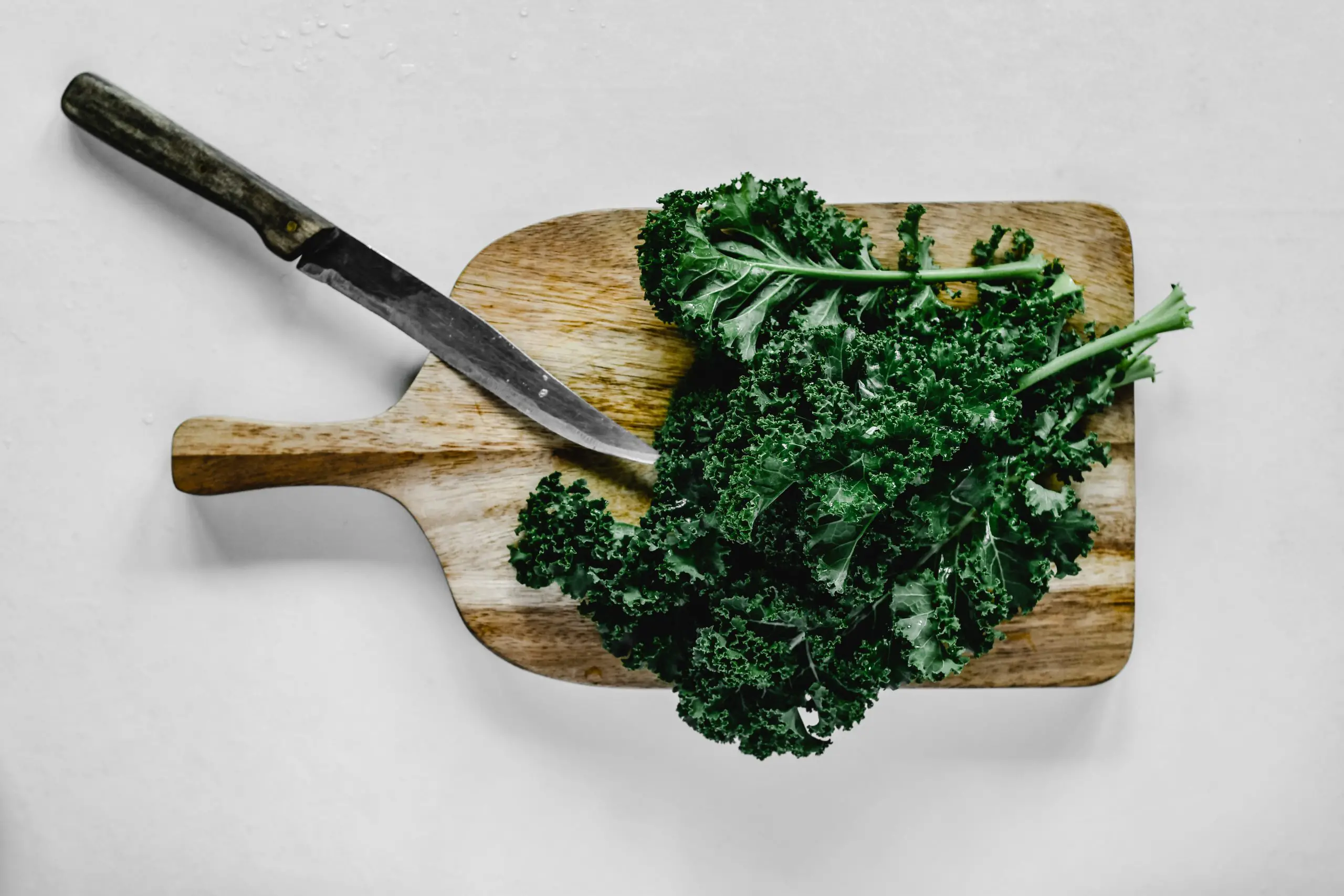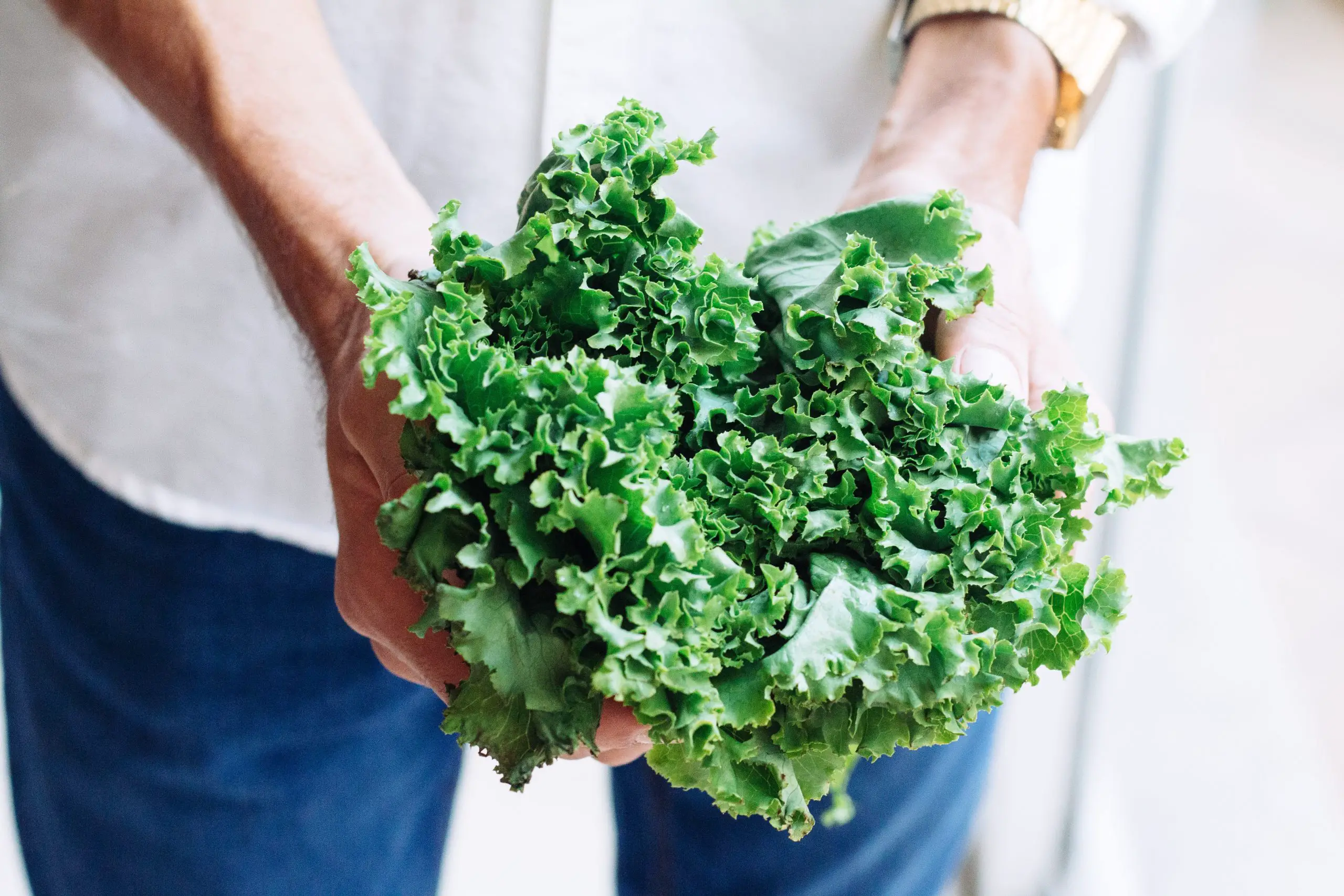Cleaning the leaves, clipping the stems, and putting the leaves in an airtight bag are a few easy procedures in the freezing process of Kale. Kale must be frozen while it’s dry to ensure that the leaves retain as much of their original structure as possible.
We’ll show you how to freeze Kale with a shelf life of around a year, whether you have an abundance of it in your garden or want to take advantage of a sale at your local grocery store.

How to Freeze Kale?
Kale can be frozen easily, but you must be ready for this. Otherwise, your Kale might freeze up even more brittle than usual and defrost up soggy.
Start by thoroughly cleaning your Kale. You can accomplish this by running tap water over the leaves. But we advise letting your Kale soak in a bowl of water first. After that, rub your hands over the leaves to get rid of the loose dirt, being sure to reach every crevice.
The stem should be cut around and discarded because it contains more water than the kale leaves. So the water will expand as it freezes if you place it in your freezer. Consequently, the structure of the stem will be harmed.
The following step, letting your kale drain completely, is essential. In fact, before letting it air dry, we advise patting it with paper towels.
Your Kale should then be placed in freezer bags. There are two ways you can apply this strategy:
- Distribute the Kale among the pre-measured bags.
- The Kale should be quickly frozen before being placed in a larger bag.
Let’s concentrate on the second approach since the first one is self-explanatory. Put all of your Kale into one bag if you don’t know how much you’ll need at once or if you don’t like throwing away a lot of freezer bags that are only half full.
The best action in this situation is to spread your Kale out on a baking sheet, ensure the leaves don’t touch and place it in the freezer for two to three hours. The Kale can be placed in the same bag without worrying about them sticking together when you pull them out in batches because any troublesome water droplets will freeze to the leaves in this manner.
The following are some additional suggestions to bear in mind as you get ready to freeze Kale:
- Squeeze the bag to remove as much air as you can.
- Do not cram the Kale into the freezer bag too tightly.
- The Kale becomes brittle in the freezer, so avoid piling things on top of it.
To remember the date you froze the Kale, label the bag.
Blanching Kale before freezing
Kale can be stored for up to a year in the freezer. However, it is important to avoid excessive moisture when freezing it. To defrost Kale, remove it from the freezer and allow it to reach room temperature. If you want to use it immediately, submerge the sealed freezer bag in cool water. This prevents freezer burn and helps keep the leafy greens fresh.
Kale can be stored in the freezer without blanching, but it will not stay as fresh. This is because freezing Kale will degrade its flavor and texture. Blanching Kale before freezing helps keep the nutrients in the leaves intact. Soaking it in water will also help wash off the dirt more easily.
Once Kale has been washed, it can be chopped before freezing. To prepare Kale for freezing, cut off the stems and chop the leaves to your desired size. You can clean it under running water if you don’t want to blanch it. Alternatively, you can submerge the leaves in cold water for two minutes before freezing.
Airtight Freezer Bag
Kale freezes well in an airtight freezer bag. Removing excess air from the bag before placing it in the freezer is important. This reduces the chance of freezer burn and helps maintain the crispness of your Kale. Once the Kale is frozen, it can be stored for up to two days.
You can also place whole bunches of Kale in an airtight freezer bag. It is important to squeeze out the air from the leaves before sealing the bag. Once frozen, Kale is ready to use in soups, stews, or side dishes. You can add the stems to your soups if you don’t want to cut them.
Kale is best used when cooked, but it’s not ideal for raw salads or kale chips. Kale freezes very well; you can use it for smoothies, muffins, and other dishes. Thawing the frozen Kale in a water bowl is a quick and easy way to use it.
Flash Freeze
On a baking sheet covered with parchment paper, arrange the leaves in a single layer. Use paper towels or a fresh, non-linting kitchen towel to blot the Kale dry. (Kale leaves can also be stuffed into ice cube trays or muffin tins for quick, pre-portioned servings. Before removing the wells, lightly oil them.) The kale pieces should be frozen for two to three hours or until fully solid.
How to Prepare Kale for Freezing?
Before you can freeze the Kale using one of these techniques, it must first be thoroughly cleaned and completely dried by patting it dry between two clean kitchen towels.
Make sure to wash the Kale with the leaves separated and to clean the groves thoroughly. The Kale’s curled leaves are perfect for hiding dirt!
Depending on how you plan to use it, cutting the Kale’s stems off might be best.
Intensely fibrous and challenging to chew, the stems can be. Only if you intend to puree or incorporate the stems into future soups and stews should you leave the Kale on.
Does Freezing Kale Ruin it or Reduce Nutrients?
The natural enzymes present in raw Kale continue to ripen the leaves and alter their flavor, texture, and color whether or not they are frozen. These enzymes are slowed down by freezing but are not completely stopped unless the leaves are properly blanched.
However, only blanching the Kale reduces the number of water-soluble nutrients like vitamin C. While blanching Kale helps prevent enzymes from overripening the greens in the freezer, Kale that has been blanched still contains a good amount of minerals and antioxidants like flavonoids.
If you use the Kale within six weeks for raw Kale or 12 months for blanched Kale, freezing it shouldn’t affect the texture. However, be careful when removing the Kale from the freezer because it is easier to break or crumble due to its frozen state if you handle it roughly. This was especially true for curly Kale, in my opinion.
How to Make a Kale Smoothie?
Kale can be frozen and used later in smoothies. Making smoothie prep bags is another way to go one step further.
This is what? It is a pre-made baggie with all the ingredients portioned out for speedy use for the smoothie recipe you like best.
It’s as simple as putting your favorite fruits and vegetables in a freezer bag, labeling it, and freezing it. You can make your smoothie in under a minute by putting the liquid ingredients in the blender and blending them.
How to Tell if Frozen Kale is Bad?
It can be difficult to tell whether your frozen Kale is bad because it typically has a dryer, crumblier texture when taken out of the freezer.
However, it’s a good sign that your Kale is damaged if you see a slimy film. Additionally, it could alter hue, typically going from a dark green to a green-yellow or brown.
Take one last whiff of your Kale. It’s best to toss it out if it smells as horrible as the Kale that would spoil in your fridge before you realize you could freeze it.
Your Kale’s quality won’t increase while it’s in the freezer, which should go without saying but is still worth mentioning. Therefore, you can anticipate that frozen kale leaves already close to going bad will thaw in a similar condition.
What can I do with too Much Fresh Kale?
How To Use Up Kale Leftovers
- It is blended with Kale. Due to its sometimes grainy texture and occasionally bitter flavor, Kale might seem like the last green you’d want to include in a smoothie.
- Fried Kale.
- Lettuce wraps with Kale.
- Kale and Green Goddess Soup for Summer.
What is Healthier, Spinach or Kale?
The Final Verdict. Both Kale and spinach are quite nutrient-dense and have several advantages. While spinach has more folate and vitamins A and K than Kale, the latter has more than twice as much vitamin C. Both have been connected to higher weight loss, better heart health, and illness prevention.
Can you Freeze Lettuce?
Can lettuce be frozen? Not if you want to use the thawed product to make a tossed salad. However, you can freeze lettuce for use in cooking and flavoring. Since the freezing process causes ice crystals to form in plant cells, you won’t be able to use frozen lettuce to make salads.
Conclusion
The only thing left to do is go shopping or visit your garden to stock up on Kale now that you know how to freeze it. While frozen Kale isn’t the best option for a salad, you can still use it in smoothies and hot dishes.
You can anticipate having delicious Kale for up to a year from the date you put it in your freezer, provided you follow the freezing preparation techniques described below.

